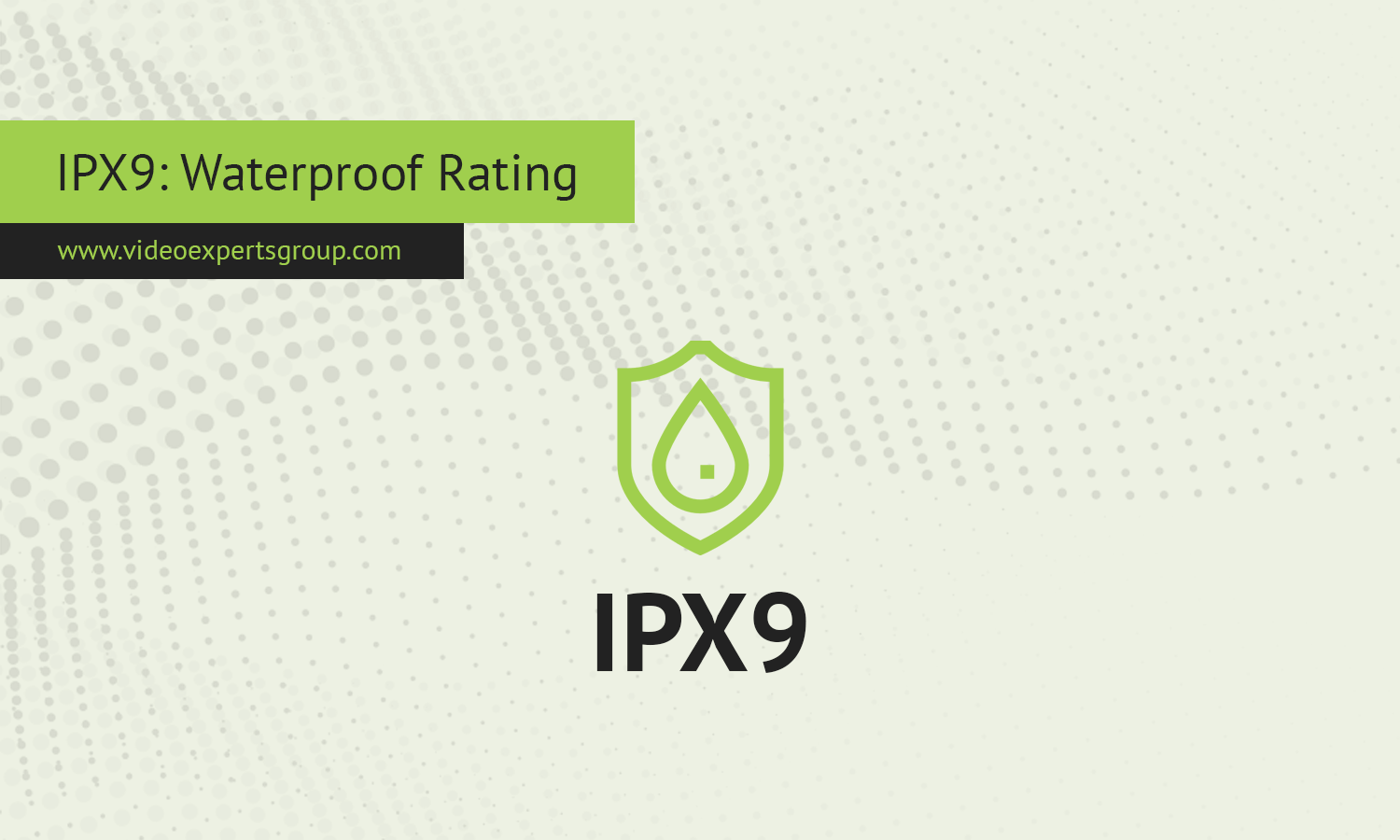When exploring the highest levels of water protection in electronic devices, the IPX9 rating stands out for its superior resistance to harsh water conditions. This rating is typically applied to devices used in extreme environments, such as industrial machinery, outdoor security cameras, or high-pressure cleaning equipment. IPX9 offers protection not just against submersion, but against powerful, high-temperature water jets, making it an excellent choice for applications requiring extreme water resistance.
Meaning
IPX9 is part of the Ingress Protection (IP) rating system, where the "IP" stands for Ingress Protection, and the "X" means that the device has not been tested for solid particle ingress (dust resistance). The "9" refers to the highest level of protection against water ingress, specifically from high-pressure, high-temperature water jets. This rating ensures that a device can withstand exposure to water projected at high pressures and temperatures from various angles without suffering internal damage or malfunction.
Devices with an IPX9 rating are often designed for demanding environments, such as in the automotive industry, food processing plants, or outdoor surveillance, where equipment may need to endure harsh cleaning procedures or exposure to extreme weather conditions.
IPX Rating Chart
| IPX Rating | Protection Level | Description |
| IPX0 | No protection | No protection against water ingress |
| IPX1 | Drip-proof | Protection against vertical water drops |
| IPX2 | Drip-proof (15-degree tilt) | Protection against water drops when tilted up to 15 degrees |
| IPX3 | Spray-proof | Protection against water spray up to 60 degrees from vertical |
| IPX4 | Splash-proof | Protection against water splashes from any direction |
| IPX5 | Water-jet resistant | Protection against water jets from a 6.3mm nozzle from any direction |
| IPX6 | Powerful water-jet resistant | Protection against more powerful water jets |
| IPX7 | Immersion up to 1 meter | Protection against temporary immersion in water up to 1 meter for 30 minutes |
| IPX8 | Immersion beyond 1 meter | Protection against continuous immersion in water beyond 1 meter, under conditions set by the manufacturer |
| IPX9 | High-pressure, high-temperature water resistant | Protection against high-pressure, high-temperature water jets |
What is the IPX9 Test Procedure?
The IPX9 test is designed to simulate the conditions where a device is exposed to high-pressure water jets at elevated temperatures. This test ensures the device can resist water penetration under extreme conditions. The procedure is as follows:
-
Test Setup: The device is placed in its regular operating position inside a test chamber equipped with water jets that can project water from different angles.
-
Water Pressure: The water is sprayed at very high pressures, typically at 80-100 bar (1,160 to 1,450 psi), which is significantly more powerful than the lower IPX ratings. This simulates conditions like pressure washing or high-pressure rain.
-
Water Temperature: Unlike other IP tests, the water used in the IPX9 test is heated to temperatures as high as 80°C (176°F). This simulates real-world scenarios where devices may be exposed to hot water during cleaning or industrial processes.
-
Spray Duration and Distance: Water is sprayed at the device from all directions for a duration of 30 seconds to 2 minutes per angle, with a spray distance ranging between 10 and 15 cm (approximately 4-6 inches). The test ensures that all sides of the product are exposed to the water jets.
-
Rotation and Coverage: During the test, the device may be rotated or moved within the chamber to ensure that every surface is tested. The water jets must cover a full 360-degree area to guarantee comprehensive exposure.
-
Pass Criteria: For a device to pass the IPX9 test, no water must enter critical internal areas. After the test, the device must operate normally, with no malfunction or signs of water ingress.
Requirements
For a device to achieve an IPX9 rating, it must meet specific construction and performance requirements to ensure durability and waterproofing under extreme conditions:
-
Robust Sealing and Enclosure: Devices must have advanced sealing mechanisms, often using high-grade rubber or silicone gaskets, to protect vulnerable areas like seams, joints, and connection ports. These seals prevent water from penetrating during high-pressure water exposure.
-
Heat-Resistant Materials: The materials used in the construction of the device must be resistant to both water pressure and high temperatures. Commonly used materials include industrial-grade plastics, stainless steel, and other water- and heat-resistant compounds that can maintain their integrity under harsh conditions.
-
Compliance with Testing Standards: The device must comply with specific international standards, such as IEC 60529, which governs water ingress protection tests. These standards define the exact conditions under which IPX9 testing is conducted and ensure that manufacturers follow rigorous procedures.
-
Post-Test Functionality: After being exposed to high-pressure, high-temperature water, the device must remain fully operational. This means that its electronics, buttons, sensors, and any other components must function correctly without any signs of water damage or corrosion.
An IPX9 rating provides the highest level of water ingress protection, especially in environments where devices are subjected to intense water jets and heat. Products with this rating are designed to endure tough conditions like pressure washing, industrial cleaning, or exposure to heavy rainstorms. This level of protection makes IPX9-rated devices ideal for use in heavy-duty environments like factories, outdoor installations, and vehicles. However, the rating does not necessarily cover submersion in water for extended periods — so for complete waterproof protection, you may need to consider additional factors or combine IPX9 with other ratings, like IPX7 or IPX8, depending on the use case.
















